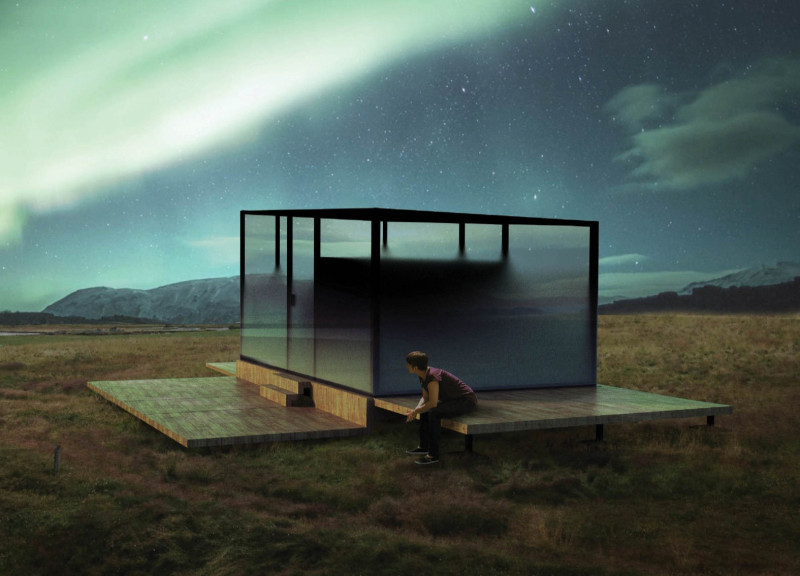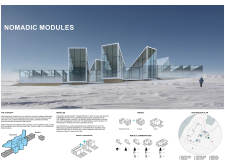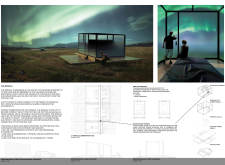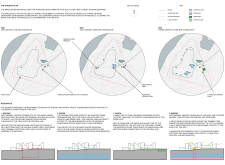5 key facts about this project
At the core of this project lies the central hub, which functions as the main gathering space equipped with essential facilities such as kitchens, dining areas, and wellness features including a pool and sauna. The design prioritizes large glass panels that invite natural light into the space, fostering an atmosphere of openness and connection with the external landscape. These features not only enhance functionality but also create an inviting setting where guests can share experiences and build community.
Surrounding the central hub are transportable modular units, uniquely characterized by their adaptability and efficiency. These modules can be configured in a variety of arrangements, accommodating different group sizes and purposes—from cozy individual retreats to communal lounges. The folding design of these modules enables easy transportation and setup, aligning with the project’s philosophy of minimizing environmental impact during construction. The choice of materials further reflects a commitment to sustainability, incorporating timber structural frames for strength yet minimizing weight, alongside double-glazed windows that offer necessary insulation in the variable Icelandic climate.
One of the significant distinguishing aspects of the Nomadic Modules design is its emphasis on user experience and environmental sensitivity. Each module is equipped to provide a panoramic view of the dramatic Icelandic terrain, inviting guests to immerse themselves fully in the natural surroundings. This design choice highlights an intention to create spaces that not only serve functional purposes but also enhance the quality of life for users through interaction with the majestic outdoors.
The adaptability of the modules not only caters to changing user needs but also ensures the project remains relevant in a fluctuating tourism market. This architectural idea allows for scalability, enabling the addition of more units or modifications as demand evolves. Furthermore, the integration of renewable energy systems, such as geothermal heating and solar panels, underscores a commitment to sustainable practices that resonate with contemporary environmental challenges.
The Nomadic Modules project is remarkable for its innovative approach to architectural design, reflecting a keen understanding of the relationship between built environments and nature. Its commitment to sustainability, flexibility, and community engagement makes it a compelling case study in modern architecture. As you delve deeper into this project, consider exploring architectural plans, sections, and other architectural designs that detail its thoughtful approach and unique features. These insights will provide a more comprehensive understanding of the project and its significance in the realm of contemporary architecture.


























